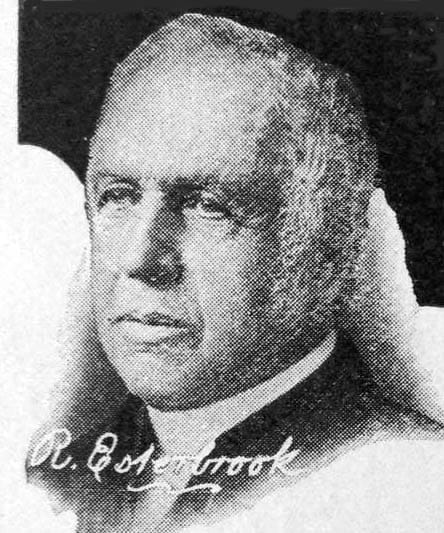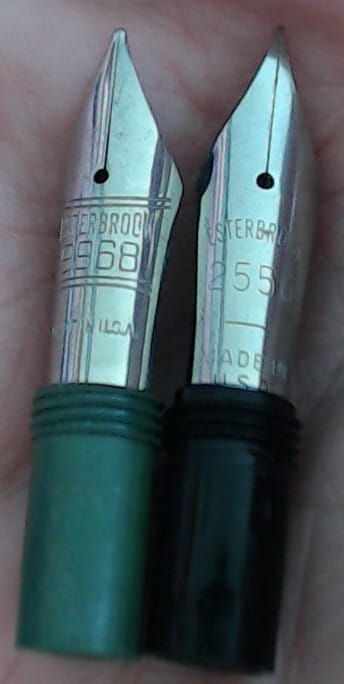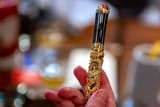Esterbrook J—your first vintage pen?
Join us as we delve into one of the most famous and well-respected vintage pens of all time.

The Esterbrook J is one of the most well-respected vintage models in fountain pen history. It was a very affordable fountain pen, but its focus on build quality and interchangeable nib units made it a favorite among the working class and the elite alike. Nowadays, the Esterbrook J series is well-known for being easy to restore, service, and clean and is at the top of many recommendation lists for a first vintage pen.
Esterbrook: A brief history
Richard Esterbrook, a Cornish Quaker from England, founded Esterbrook Pen Company in 1858 in Camden, New Jersey, USA. At its peak, Esterbrook was the largest pen company in the USA, employing about 600 workers. The Esterbrook company primarily used steel to manufacture nibs for their pens, starting with dip pens. Famous artists used their dip nibs—Carl Banks created the character of Donald Duck for Disney with the Esterbrook Radio 356, and Charles Schulz used the Esterbrook Radio 914 to draw Peanuts.
The Esterbrook company left a legacy that will last for an eternity. Among people who used their pens were presidents Lincoln, Kennedy, and LBJ.

In 1967, Esterbrook was purchased by Venus Pencils, a manufacturer of high-quality pencils for architects and artists, and changed its name to Venus-Esterbrook. In 1971, the Esterbrook division folded, and in 1973, Venus Pencils was acquired by Faber-Castell, thus ending a chapter in fountain pen history.
The Esterbrook brand name was recently resurrected. Kenro Industries acquired the rights to the name in 2018, and started making modern pens under the Esterbrook brand. The current Esterbrook company claims continuity with the original Esterbrook, though they are different companies. They pay heritage to original Esterbrook by supporting old Esterbrook nib units and by making designs inspired by the original Esterbrook pens. The new designs are generally well-reviewed; they are modern pens that come with de facto standard JoWo nibs.
The Esterbrook Model J series
In 1943, the Esterbrook pen company announced the J series as a piston filler, but about a year later, this pen came out as a lever filler. It was an inexpensive but high-quality pen with something for everyone — a large variety of easily interchangeable nib units, using the system Esterbrook had earlier developed for the Dollar Pen.
The Esterbrook J series consisted of four models:
- J, the first entry of the series and flagship
- LJ, the same length as J, but thinner
- SJ, same thickness as LJ, but shorter
- CH (with clip) & H (without clip); these were also called "purse pen"
CH and H models came in a variety of pastel colors. J, LJ, and SJ models came in many marbled colors. The later J Deluxe came out in 1950 and had steel caps.



Interchangeable nib units
London pen company Mentmore introduced the first interchangeable nib units in 1925 with their Platignum brand pens. It’s my speculation that Esterbrook company, having English roots, acquired this knowledge and began making interchangeable nib units for their pens. These nib units came in two main versions — Durachrome Points and Master Points. The difference is that the tipping on Master Points (9xxx) was manufactured from iridium, the most corrosion-resistant metal known at the time. Tipping on Durachrome points were unfolded steel (1xxx) and folded steel (2xxx). For both versions, Esterbrook manufactured 16 different nib points. For a short time, Esterbrook manufactured points with 3xxx and 8xxx numbers. Tipping material on these points was made from osmiridium, an alloy of Platinum group metals.

What the heck are all these different nibs?

I'm sure you recognize fine, medium, broad; and if you've been around FPs for a while you'll also recognize the stub and italic nibs. But there are many other varieties of what Esterbrook calls "points", or specialty nib grinds. What are these other nibs in the chart?
- Shaded Writing or "Falcon" points (2048, 9788) are semi-flex nibs to provide character to your writing.
- Shorthand points (1555, 9555) are Fine points designed for Gregg and Pitman shorthand.
- Carbon Copier points (1461, 9460, 9461) are manifold nibs, designed to be very stiff and be able to make an impression through carbon copy papers, which were sometimes folded (hence the name manifold - many folds).
- Posting points (9450) were extra fine nibs designed to write on postcards, which had limited space and were often made of the roughest and cheapest paper—hence the name posting.
- Bookkeeping points (1550, 2550) were needlepoint ultra-extra-fine nibs designed specifically to write in bookkeeping ledgers with small graph paper.
Should an Esterbrook J be your first vintage pen?
Esterbrook J series pens are inexpensive but very sturdy pens and work great as everyday carry pens. There are plenty of nib points to choose from to fit any person’s writing style. Maintenance is easy — unscrew the nib unit, flush it with running water or a bulb syringe, and flush the ink sac with water using a bulb syringe or a flat-end syringe. That's it!
There are a few things you need to be mindful of. These pen models hold about the same amount of ink as any standard ink cartridge. Inks tend to cling to the latex sacs used in these pens, so choose an ink color and stick to it. You should pick inks that are known to be safe for latex sacs—Waterman, Parker Quink and Sheaffer Scrip, as well as the standard lines from Herbin and Diamine (non-sheen non-shimmer) are good choices to start. I would not advise using ultrasonic cleaners to clean vintage nib units because the metal used for the tipping materials is tough but can become brittle with age at the welding point and may break off.
If you're not ready to buy a vintage Esterbrook pen but want to experience their vintage nibs and own a modern Esterbrook pen, you can buy a vintage nib unit adapter and a vintage Esterbrook nib unit of your choice. Screw them into your pen and voila! You can now write with a vintage nib in a modern Esterbrook pen!
If you have any questions or suggestions, please feel free to reach out to me on Mastodon.
Further reading on the Esterbrook J series:




